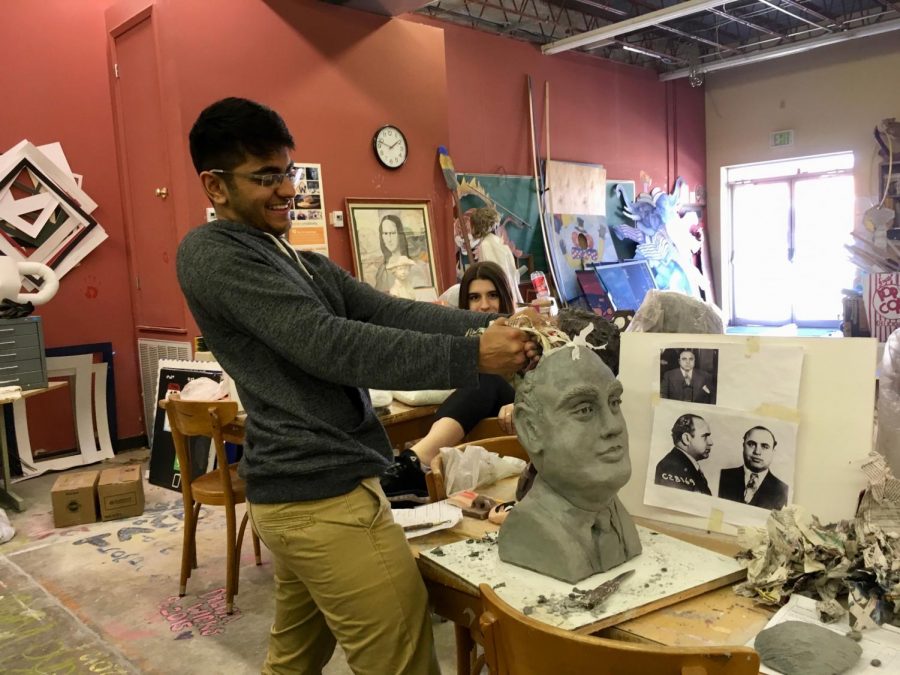Stokley: Arts Education Vital for American Classrooms
Student Smith Patel sculpts a bust out of clay in sculpture class.
April 16, 2018
Amidst significant budget cuts in public education, school arts education programs are a major source of contention, and teachers, parents and students are all asking the same question: Is arts education beneficial, or even necessary, for developing students?
Substantial cuts in public school education funding have continuously eroded at the amount of resources accessible to American students, chipping away at opportunities for enhancing knowledge and expertise in math, science and literature. All of these subjects are vital to a fulfilling education, but one classroom subject has nearly disappeared from the American public education system as a result of the onslaught of budget eradication.
Arts education programs are vanishing from public schools across the nation, and they are just as important for ensuring students are prepared for college, sufficiently educated, and oriented for future success.
A report released in 2011 by the Obama Administration’s Committee on the Arts and Humanities analyzed public schools across the nation and concluded that arts education aids in improving student test scores.
The report states, “Student achievement, typically as represented by reading and mathematics performance on high stakes tests, including transfer of skills learning from the arts to learning in other academic areas—for example, the spatial-temporal reasoning skills developed by music instruction.”
Not only can art education benefits be traced through numerical improvements in testing and achievement; the benefits extend to reach and affect developmental enhancement, social competence and spatial-temporal reasoning skills.
These sorts of activities–painting, playing a musical instrument, sculpting and anything else that cultivates creativity–are crucial for developing patience, adaptability, and ingenuity. These are all skills that must be developed in order to succeed in a modern workplace–even in job departments such as engineering, scientific research and computation.
Studies carried out by USA Today and Guggenheim even have revealed convincing evidence that show arts education boosts literacy rates and graduation rates. The verdict is in: a quality arts education is not simply beneficial for improving arts skills. It’s a fantastic way to develop as a person, learn life lessons, and prepare for the next steps in a student’s academic career.
The case for arts education is not a difficult debate. Even in the midst of a budget crisis for American public education, we must ensure that the future of the next generation across the country is secured, and that students are prepared, well-developed and oriented for success in the most efficient and comprehensive way possible. Quality arts education programs must remain in our schools for the livelihood and success of students in all aspects of their lives.









